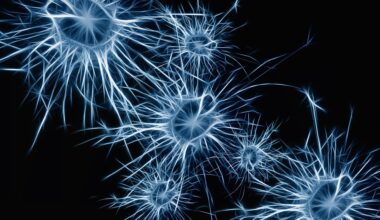Loss-of-function mutations in some genes have been identified in people with neurodevelopmental disorders.
New research by Dr. Shernaz Bamji (pictured) and PhD candidate Jordan Shimell, published recently in the journal Cell Reports, elucidates the role of the ZDHHC9 gene in the brain. ZDHHC9 is a gene that has been previously associated with X-linked intellectual disability, an inherited form of intellectual disability linked to the X-chromosome, and epilepsy.
While ZDHHC9 has a known link with X-linked intellectual disability and epilepsy, its role in brain development has not been examined. Dr. Bamji and colleagues have offered new clarity on the function of the gene and its implications for neural circuit development.
ZDHHC9 is present throughout the brain, and the research demonstrates that it plays an important role in the growth of dendrites, the part of the neuron that receives electrical signals and aids in cell-to-cell communication within the brain. Interestingly, dendritic abnormalities are strongly correlated with intellectual disabilities. People with X-linked intellectual disability for whom the ZDHHC9 gene is impaired have higher rates of epilepsy compared to those with X-linked intellectual disability with an intact ZDHHC9 gene; Dr. Bamji and colleagues also observed that in a mouse model in which the ZDHHC9 gene is absent, the mice demonstrated increased seizure activity.
“We have demonstrated that loss of the gene can increase in the ratio of excitatory-to-inhibitory (E:I) synapses, resulting in seizure disorders, and disrupt dendrite growth,” said Shimell. “These findings offer a plausible mechanism for how loss of ZDHHC9 function may contribute to intellectual disability and epilepsy.”
“ZDHHC9 expression is extremely highly expressed in myelinating oligodendrocytes, a type of immune cell that produces myelin (the fatty substance that insulates neurons), and we are really interested to understand the role of this enzyme in regulating oligodendrocyte development and well as regulating myelination of neurons,” said Dr. Bamji, whose lab is one of very few in the world who study this fundamental process in the brain.
The team’s findings build upon their work investigating the role of palmitoylation, a process by which the DHHC enzymes add fatty acids to proteins to aid their trafficking and function, in nervous system disorders. Previous work from the lab showed that DHHC enzymes can act as master regulatory “hubs” for activity-dependent structural and functional plasticity critical to proper circuit formation.
Palmitoylation is emerging as a critical player in the nervous system, as nearly 41 percent of all synaptic proteins are affected by palmitoylation, and many of the DHHC enzymes have been linked to neurological disorders.
“We believe that a better understanding of the role of palmitoylation in the nervous system will lead to a better understanding of the normal functioning of the brain, paving the way for potential therapeutics aimed at correcting disorders affecting synapse form or function,” concludes Dr. Bamji.


